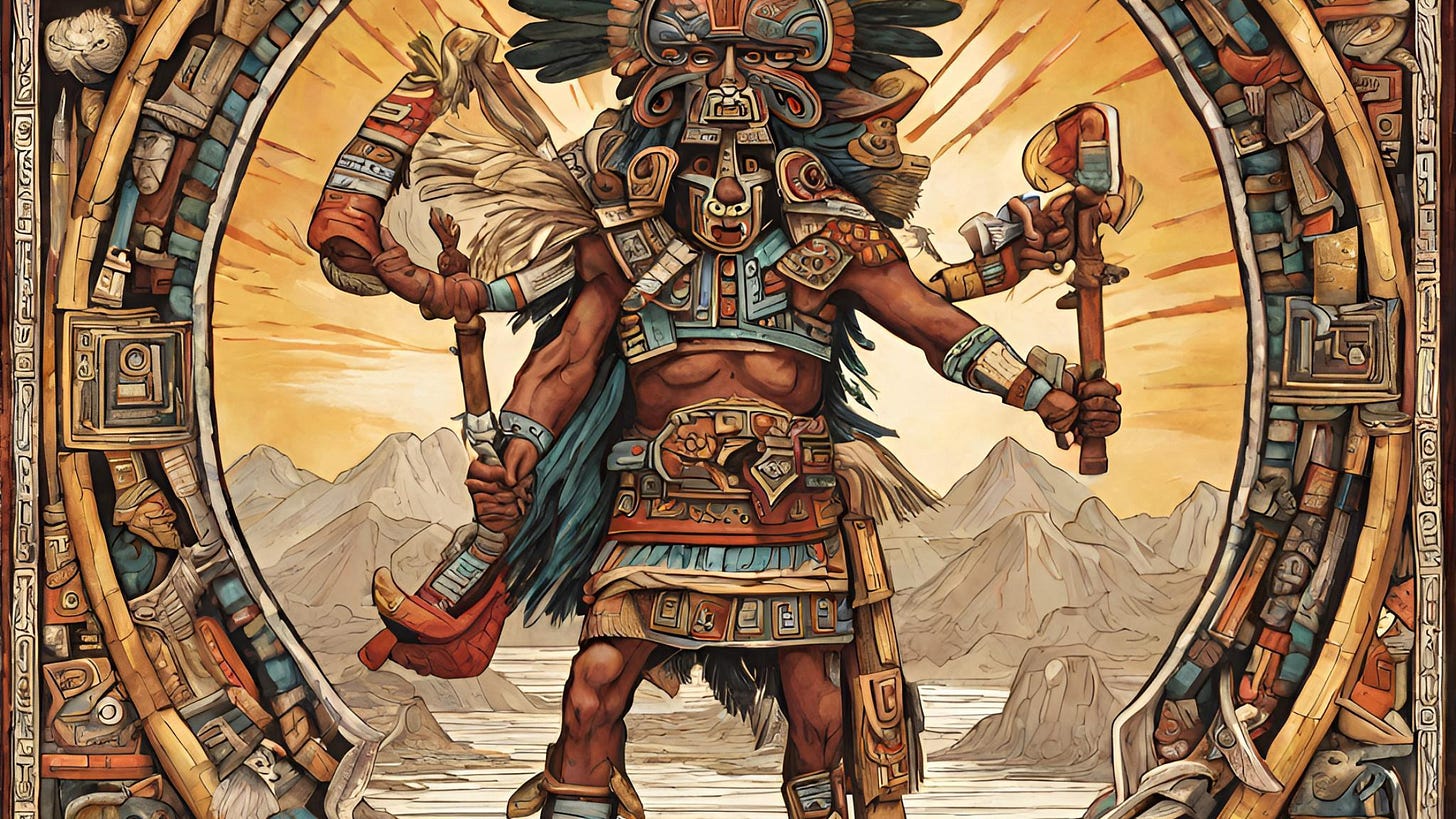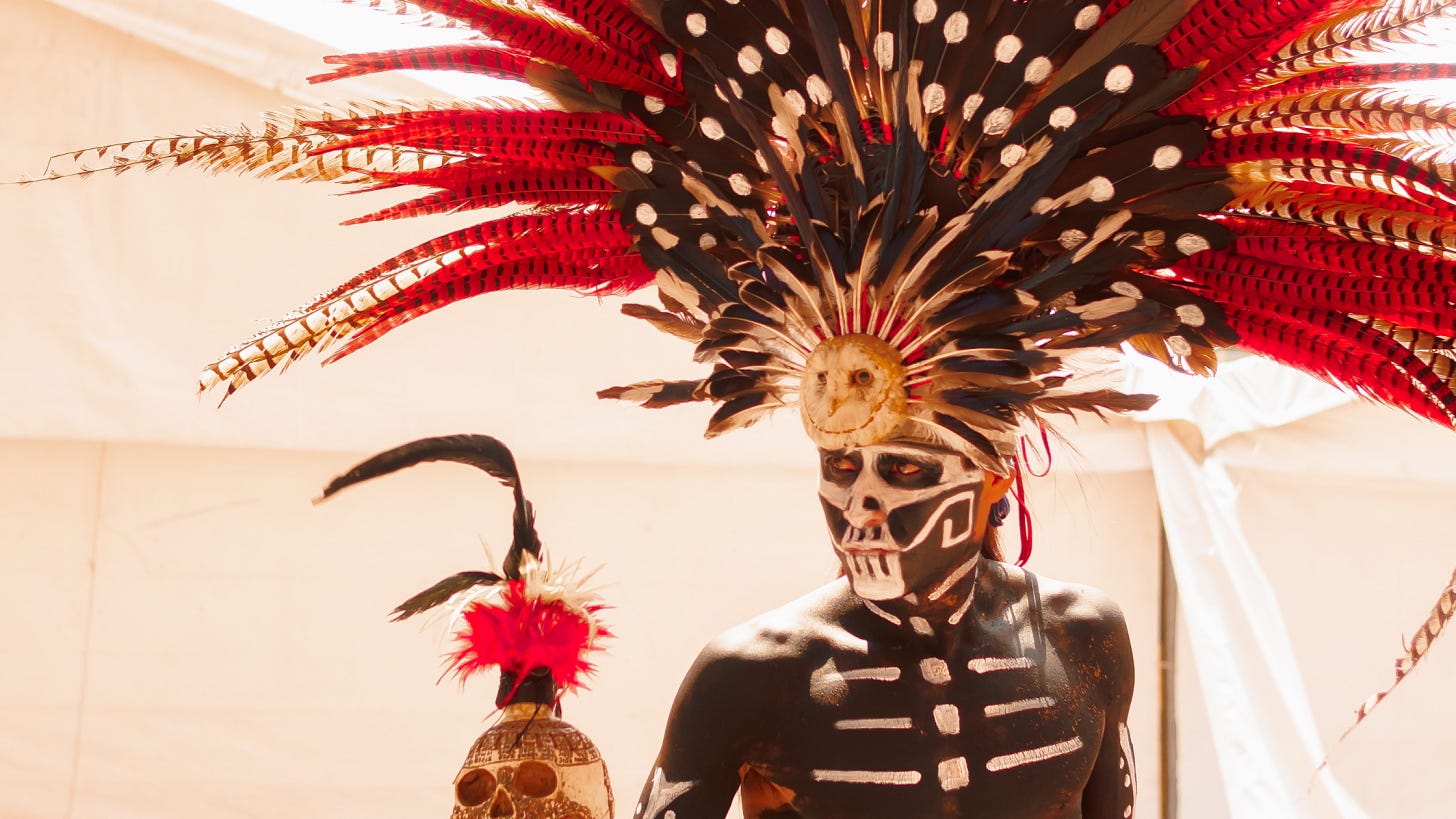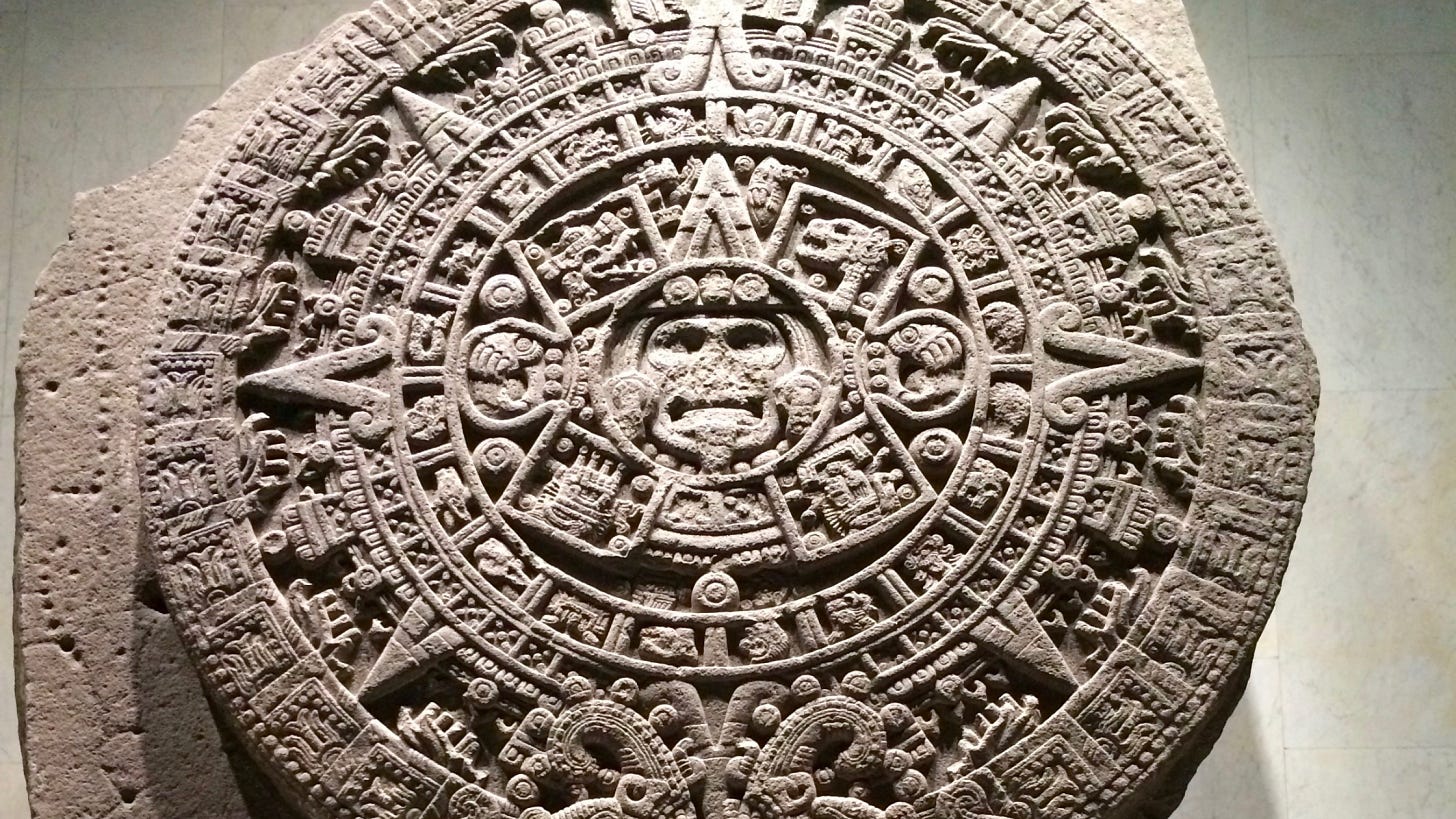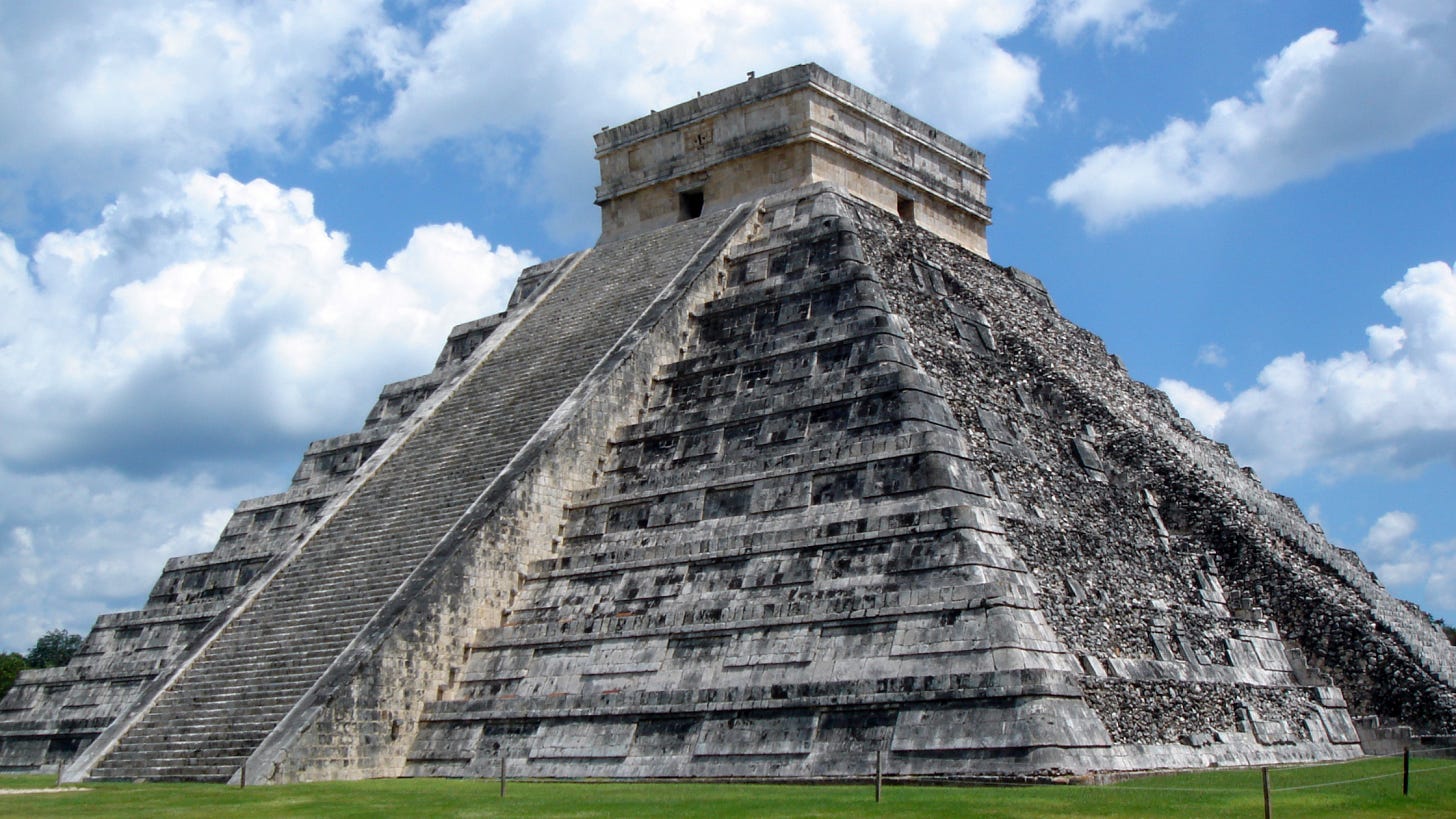As I delve into the rich history of the Aztec civilization, I am struck by the fascinating story of Huitzilopochtli, the god of the sun and war. According to Aztec mythology, Huitzilopochtli was born to the goddess Coatlicue, who became pregnant after she found a ball of feathers on a mountaintop and placed it in her clothing. The story of Huitzilopochtli's birth is a captivating tale that sheds light on the Aztec belief system and their reverence for the sun.
The Aztecs believed that Huitzilopochtli was the protector of their people and that his birth was a significant event in their history. According to legend, Huitzilopochtli was born fully grown and armed and immediately set out to defend his mother from his jealous siblings. He ultimately defeated his enemies and became the god of the sun and war, a revered figure in Aztec mythology.
The story of Huitzilopochtli's birth is just one example of the rich mythology and culture of the Aztecs. Through their legends and beliefs, we can gain a deeper understanding of their worldview and the significance of the sun in their society.
The Legend of Huitzilopochtli
Huitzilopochtli was the Aztec god of war, sun, and sacrifice. According to Aztec legend, Huitzilopochtli was born to a woman named Coatlicue, who was a goddess of fertility and motherhood. The story goes that Coatlicue was sweeping a temple when a ball of feathers fell from the sky and impregnated her. Her other children, the Centzon Huitznahua, were angry and jealous of their mother's pregnancy. They plotted to kill her and her unborn child.
However, Huitzilopochtli was not an ordinary child. He was born fully grown and armed, and he immediately killed his brothers and sisters to protect his mother. He then became the patron god of the Aztecs and led them on a journey to find their homeland, which they believed was the place where an eagle perched on a cactus with a snake in its beak.
According to the legend, Huitzilopochtli appeared to the Aztecs in a vision and told them that they would find their homeland in a place where they saw an eagle perched on a cactus with a snake in its beak. After a long journey, the Aztecs finally found the place they were looking for, which is now Mexico City. They built their capital city, Tenochtitlan, on an island in the middle of a lake.
Huitzilopochtli was a very important god to the Aztecs, and they believed that they needed to make sacrifices for him in order to keep him happy and ensure their success in battle. They would offer him human sacrifices, often prisoners of war or slaves, and their hearts would be cut out and offered to him on a special altar.
Overall, the legend of Huitzilopochtli is an important part of Aztec mythology and history. It tells the story of the birth of a powerful god who protected his mother and led his people to their homeland. The Aztecs believed that Huitzilopochtli was a vital part of their culture and that they needed to make sacrifices for him in order to ensure their success in battle.
Historical Context
The birth of Huitzilopochtli is a significant event in Aztec mythology. It is believed to have occurred in the early 14th century, and the story has been passed down through generations. To understand the significance of this event, it is essential to consider the historical context in which it occurred.
At the time of the birth of Huitzilopochtli, the Aztec people were living in the Valley of Mexico. They had recently migrated to the area and were establishing their civilization. The Valley of Mexico was a fertile region that supported agriculture, and the Aztecs were able to build a thriving society.
The Aztecs were not the only civilization in the region. There were several other groups, including the Toltecs and the Tepanecs. These groups had their own beliefs and traditions, and they often clashed with the Aztecs.
The Aztecs believed in a complex pantheon of gods, and Huitzilopochtli was one of their most important deities. He was the god of war, the sun, and human sacrifice. The Aztecs believed that Huitzilopochtli had led them to the Valley of Mexico and had promised them a great empire.
The Birth of Huitzilopochtli is a creation story that explains how the god came to be. According to the myth, Huitzilopochtli was born to Coatlicue, a powerful goddess who was also the mother of the stars. The story is complex and involves several other gods and goddesses.
In conclusion, the birth of Huitzilopochtli is a significant event in Aztec mythology that occurred in the early 14th century. To understand its significance, it is essential to consider the historical context in which it occurred. The Aztecs were establishing their civilization in the Valley of Mexico, and they believed in a complex pantheon of gods. Huitzilopochtli was one of their most important deities, and The Birth of Huitzilopochtli is a creation story that explains how the god came to be.
Significance in Aztec Mythology
Huitzilopochtli is a significant deity in Aztec mythology. As the patron of the Aztec people and the god of war, he played a central role in their religious practices. The Aztecs believed that Huitzilopochtli was born from the womb of his mother, Coatlicue after she was impregnated by a ball of feathers.
Huitzilopochtli's birth was seen as a triumph over darkness and chaos, and it marked the beginning of a new era of light and order. As a result, the Aztecs celebrated his birth with the festival of Panquetzaliztli, which took place in December. During this festival, the Aztecs would fast, make offerings to Huitzilopochtli, and engage in ritualistic dances and songs.
In addition to his role as a patron and a god of war, Huitzilopochtli was also associated with the sun and with human sacrifice. The Aztecs believed that human sacrifice was necessary to ensure the continued movement of the sun across the sky, and they would offer captives to Huitzilopochtli in order to appease him and ensure his favor.
Overall, Huitzilopochtli played a central role in Aztec mythology and religious practices. His birth was seen as a triumph over darkness and chaos, and his role as a patron and a god of war was essential to the Aztecs' way of life.
Huitzilopochtli's birth story
The Prophecy
According to Aztec mythology, Huitzilopochtli was the god of war, sun, and human sacrifice. The story of his birth begins with a prophecy that was made for the Aztecs. The prophecy stated that the god who would lead the Aztecs to their promised land would be born to a woman who wore a skirt made of hummingbird feathers.
Coatlicue's Pregnancy
The prophecy was fulfilled when Coatlicue, the mother of the Aztec gods, became pregnant. However, she was not married and did not know who the father of her child was. Her other children, the Centzon Huitznahua, were furious and believed that their mother had brought shame upon the family.
The Birth and Battle
When Coatlicue gave birth to Huitzilopochtli, the Centzon Huitznahua attacked her. Huitzilopochtli, who was born fully grown and armed, fought and defeated them. He then cut off their heads and threw them into the sky, where they became the stars.
Huitzilopochtli then became the leader of the Aztecs and led them on a journey to their promised land, Tenochtitlan. He was worshipped as a god of war and sacrifice, and his birth story became an important part of Aztec mythology.
Symbolism of Huitzilopochtli
Huitzilopochtli is a significant deity in the Aztec religion, known as the god of the sun and war. He was also the patron deity of the Aztecs, and his name means "Hummingbird of the South" in the Nahuatl language. As a symbol of the sun, Huitzilopochtli was associated with the idea of life and vitality.
One of the most prominent symbols of Huitzilopochtli was his weapon, the xiuhcoatl, which was a serpent made of fire. The serpent was a symbol of rebirth and renewal, and it was believed that Huitzilopochtli used the xiuhcoatl to defeat his enemies and bring new life to the world.
Another symbol associated with Huitzilopochtli was the hummingbird, which was believed to be the reincarnation of fallen warriors. The hummingbird's ability to fly in all directions made it a symbol of agility and quickness, which were important traits for Aztec warriors.
Huitzilopochtli was also associated with the color blue, which was believed to represent the sky and water. Blue was a sacred color in Aztec culture, and it was often used in religious ceremonies and artwork.
Overall, the symbolism of Huitzilopochtli reflects the Aztecs' reverence for the sun and their belief in the cyclical nature of life and death. The xiuhcoatl, hummingbird, and color blue were all important symbols that represented different aspects of Huitzilopochtli's power and influence in Aztec culture.
Huitzilopochtli in Modern Culture
Huitzilopochtli, the Aztec god of sun and war, remains a prominent figure in modern-day Mexican culture. While the worship of Huitzilopochtli has largely been replaced by Christianity, his influence can still be seen in various aspects of Mexican society.
One example of Huitzilopochtli's continued presence in modern culture is in the Mexican national emblem. The emblem features an eagle perched atop a cactus, devouring a snake—an image that is said to have been inspired by an Aztec legend involving Huitzilopochtli. The eagle, representing Huitzilopochtli, was believed to have led the Aztecs to their promised land, where they would build their capital city, Tenochtitlan.
Huitzilopochtli's influence can also be seen in traditional Mexican dance. The Danza de los Voladores, or Dance of the Flyers, is a ritualistic dance that dates back to pre-Columbian times and is said to honor Huitzilopochtli. The dance involves five performers, dressed in traditional Aztec garb, who climb a tall pole and then leap off, spinning around the pole as they descend.
In addition to these examples, Huitzilopochtli's name and image can be found in various aspects of Mexican popular culture, including music, literature, and film. His legacy as a powerful and revered god continues to inspire and influence Mexican culture to this day.
Frequently Asked Questions
What is the meaning of Huitzilopochtli's name?
Huitzilopochtli's name means "Hummingbird of the South" in the Nahuatl language. He was the Aztec god of war, sun, and human sacrifice.
Who was Huitzilopochtli's wife?
Huitzilopochtli did not have a wife. However, he was often associated with the goddess Coyolxauhqui, who was his sister.
Who was Huitzilopochtli's sister?
Huitzilopochtli's sister was Coyolxauhqui, the goddess of the moon. According to Aztec mythology, Huitzilopochtli killed Coyolxauhqui and threw her body down the temple stairs.
What did Huitzilopochtli accomplish?
Huitzilopochtli was a powerful and important god in Aztec mythology. He was believed to have led the Aztecs on their journey from their homeland to the Valley of Mexico, where they founded their capital city, Tenochtitlan. He was also associated with the sun, and it was believed that he fought against darkness and evil.
What is the symbol of Huitzilopochtli?
The symbol of Huitzilopochtli is a hummingbird. He was often depicted wearing a hummingbird feather headdress and carrying a shield with a hummingbird on it.
How was Huitzilopochtli born?
According to Aztec mythology, Huitzilopochtli was born fully grown and armed in his mother's womb. He then killed his siblings, including Coyolxauhqui, who had plotted against him.
Chardakliev, The Birth of Huitzilopochtli: A Powerful Aztec Deity Stefan. “Healtylifstile.Com.” Healtylifstile.Com, October 11, 2023.













